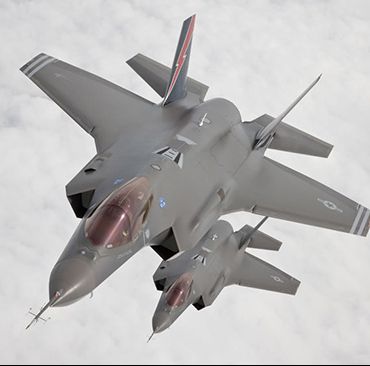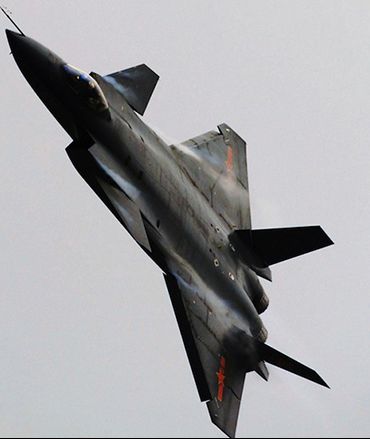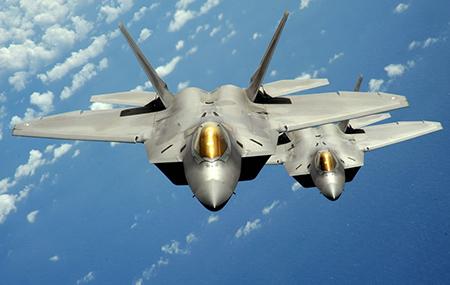Beyond the cuts there is a certainty: the funds allocated to start designing the sixth generation fighter will absolutely not be touched. According to the Pentagon, the X fighter program will initially be led by DARPA, but will involve the Navy and the Air Force. The goal is to develop prototypes for the next generation of aircraft from the aerial domain.
The Defense Advanced Research Projects Agency (DARPA) studies on sixth generation fighters have been going on for years and there would already be a timeline set to fly the new prototype, attached to the 2030.
The program, known as the Air Dominance Initiative, was created with the aim of bringing the replacement of the F-2040 (opening photo) and the F-2050 into line with the 22 / 35. Within the 2030, DARPA plans to fly at least two different cells, although they could be three.
Within the 2035 the Defense Advanced Research Projects Agency also plans to build at least two new engines that will equip the sixth generation fighter.
The specifications of the new "Dominator" of the air
Fast, invisible to radar, equipped with integrated air defense systems, equipped with laser energy weapons, with the ability to sabotage enemy computer systems and with a self-healing structure.
These are some of the features that the next sixth generation aircraft could have. Or rather, this is the thought of the special division of Lockeed Martin dedicated to experimental aircraft: the Skunk Works.
At the time of the simple conceptual ideas, but of the next generation of the Next Generation Tactical Aircraft or Next Gen TAC AIR aircraft and their possible specifications, we begin at least to discuss, considering that their entry into service is provided by the 2040.
In fact, one wonders if, to date, the need for a new generation of aircraft really exists, considering the current state of the world air force.
The United States, for example, has invested billions of dollars for the F-22 Raptor, the first fifth-generation fighter on the planet. The production of the aircraft, defined by "Dominio aereo", ended the 13 December of the 2011, with just 187 aircraft built on the 650 planned twenty years earlier.
 Then there is the F-35: the JSF will remain in service for at least forty years, replacing a wide range of aircraft like F-15, F-16, F-18 Hornet and A-10 (although on the capabilities of replace the latter, they are still there strong doubts).
Then there is the F-35: the JSF will remain in service for at least forty years, replacing a wide range of aircraft like F-15, F-16, F-18 Hornet and A-10 (although on the capabilities of replace the latter, they are still there strong doubts).
In Europe, the Eurofighter (designed to equip nations on the line of fire during the Cold War) should lay down the law between the fourth and half generation aircraft for the next thirty years, followed by the French Rafale and the Swedish Gripen. The latter have been conceived in a different way than the Efa and, that is, to perform various roles with respect to the air superiority of the Typhoon alone.
Finally, we move to Russia and China, the only two countries in the world, together with the United States, able to invest millions of dollars for fifth-generation aircraft. The Sukhoi T-50, from the Pak-Fa program, took off for the first time on January 29 2010 (without, however, part of the avionics such as radar and arms management systems). According to Russian estimates the Pak-Fa, whose production is expected to start by the end of the year even if there are strong delays, will be built in a number between exemplary 800 and 1000, including exports. For the T-50, an operating cycle of forty years is expected, with an estimated cost of 100 million dollars per hunt. At the moment, however, these are only forecasts because, compared to the American F-22, the Pak-FA is a machine in the making, with an avionics that has yet to learn to "communicate" with all the components installed.
The integration between the different sensors, in fact, can take years of work, while problems could also arise for the maintenance of the stealth coating, of which the Pak-Fa is equipped. The T-50, in fact, represents the first experience for the Russians with absorbing radar materials (Ram), compared to the thirty-year experience gained by the Americans with the F-117.
 Finally, even the fifth-generation Chinese fighter Chengdu J-20 will not enter mass production before the 2020. The aircraft, which is in some ways similar, aerodynamically, to the American and Russian equivalents, would be in this phase of development plagued by propulsion system problems, while the specifications are still shrouded in mystery. The only thing certain is that it will be produced on a large scale, at the cost of 120 million dollars per specimen.
Finally, even the fifth-generation Chinese fighter Chengdu J-20 will not enter mass production before the 2020. The aircraft, which is in some ways similar, aerodynamically, to the American and Russian equivalents, would be in this phase of development plagued by propulsion system problems, while the specifications are still shrouded in mystery. The only thing certain is that it will be produced on a large scale, at the cost of 120 million dollars per specimen.
The only fighter in the world of the fifth generation to operate is, therefore, the F-22 Raptor, whose prototype fly in the far 1987, and designed to face an enemy that no longer exists. So why start talking about a sixth generation fighter?
Because in forty years even fifth-generation fighters will reach the end of their operational cycle and will have to be replaced with better aircraft (perhaps avoiding the ordeal of the development in reduced production that is reaching F-35). The special divisions of Lockeed, Skunk Works and Boeing, the Phantom Works, have long been working on the new fighter conceptually. In addition to the greater speed in supercruising and the now obvious discounted armament capacity, the new fighter, for example, could also have a certain self-healing capacity. This feature would allow the aircraft to remain in operational theaters, even after suffering severe damage.
The idea of a self-healing system is not new. In the 2008, the aerospace engineers of the University of Bristol, they developed this technology by taking inspiration from plants and animals. The coating, placed in some vulnerable parts of the aircraft, is composed of two resins: an epoxy and a hardener. The concept is simple: by striking the area covered by the material, the latter emerges from the entrance hole of the bullet or the splinter of the exploded head. The two resins, combining with each other, seal the affected part, allowing the aircraft to continue the mission despite the damage suffered.
Then the sixth generation fighters could be equipped with laser weapons. Also in this case there is a precedent. The 29 September of the 2008, Northrop Grumman delivered to the USAF the first model of the "Vesta II", a high-energy laser capable of breaking down infrared-guided missiles. The Vesta II has already been tested on an F-15.
The experience gained with the Boeing YAL-1 will be crucial for the study of the new laser aviation weapons being transported.
But the reasoning, in addition to the specifics of the fighter, goes much further. We need to consider, for example, the evolution (and role) of the unmanned combat air vehicles or UCAVs. We must ask ourselves the evolutionary and self-conscious degree that between now and forty years of age they will reach the drones and if they will be relegated to "simple" expendable remote-controlled devices.
Finally, there is one last reasoning to do: considering the current operational theaters, with asymmetries such as to have decreed the technological superiority of the West in all the conflicts after the Cold War, one wonders against which enemy should be beaten the next aircraft of sixth generation.
Franco Iacch












